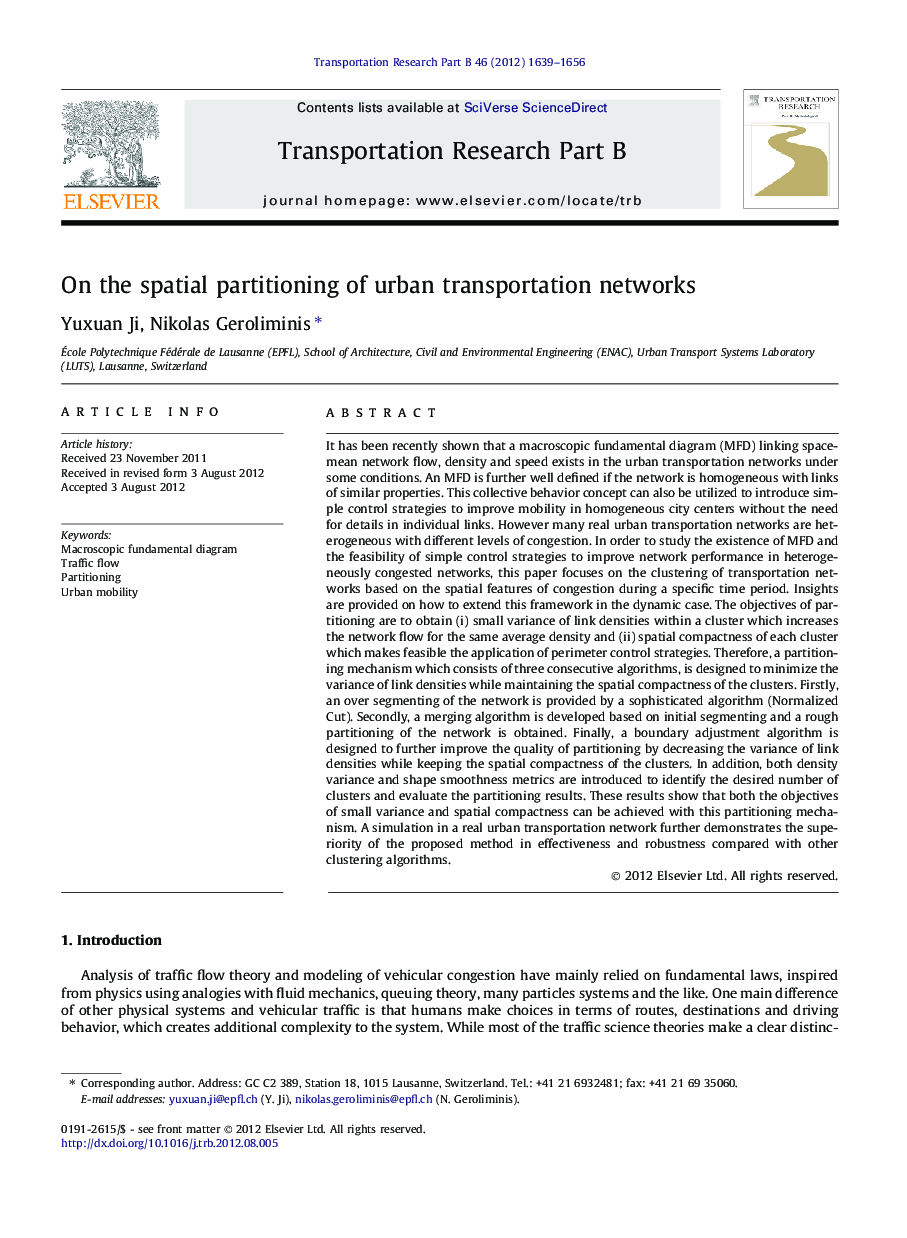| کد مقاله | کد نشریه | سال انتشار | مقاله انگلیسی | نسخه تمام متن |
|---|---|---|---|---|
| 1132361 | 955773 | 2012 | 18 صفحه PDF | دانلود رایگان |

It has been recently shown that a macroscopic fundamental diagram (MFD) linking space-mean network flow, density and speed exists in the urban transportation networks under some conditions. An MFD is further well defined if the network is homogeneous with links of similar properties. This collective behavior concept can also be utilized to introduce simple control strategies to improve mobility in homogeneous city centers without the need for details in individual links. However many real urban transportation networks are heterogeneous with different levels of congestion. In order to study the existence of MFD and the feasibility of simple control strategies to improve network performance in heterogeneously congested networks, this paper focuses on the clustering of transportation networks based on the spatial features of congestion during a specific time period. Insights are provided on how to extend this framework in the dynamic case. The objectives of partitioning are to obtain (i) small variance of link densities within a cluster which increases the network flow for the same average density and (ii) spatial compactness of each cluster which makes feasible the application of perimeter control strategies. Therefore, a partitioning mechanism which consists of three consecutive algorithms, is designed to minimize the variance of link densities while maintaining the spatial compactness of the clusters. Firstly, an over segmenting of the network is provided by a sophisticated algorithm (Normalized Cut). Secondly, a merging algorithm is developed based on initial segmenting and a rough partitioning of the network is obtained. Finally, a boundary adjustment algorithm is designed to further improve the quality of partitioning by decreasing the variance of link densities while keeping the spatial compactness of the clusters. In addition, both density variance and shape smoothness metrics are introduced to identify the desired number of clusters and evaluate the partitioning results. These results show that both the objectives of small variance and spatial compactness can be achieved with this partitioning mechanism. A simulation in a real urban transportation network further demonstrates the superiority of the proposed method in effectiveness and robustness compared with other clustering algorithms.
► We partition transportation networks based on spatial features of congestion.
► A three-step partitioning mechanism for transportation networks is designed.
► The spatial compactness of the clusters is obtained after partitioning.
► Several homogeneity metrics to evaluate the partitioning results are specified.
► Scatter of partitioned MFDs decreases for heterogeneous density of networks.
Journal: Transportation Research Part B: Methodological - Volume 46, Issue 10, December 2012, Pages 1639–1656